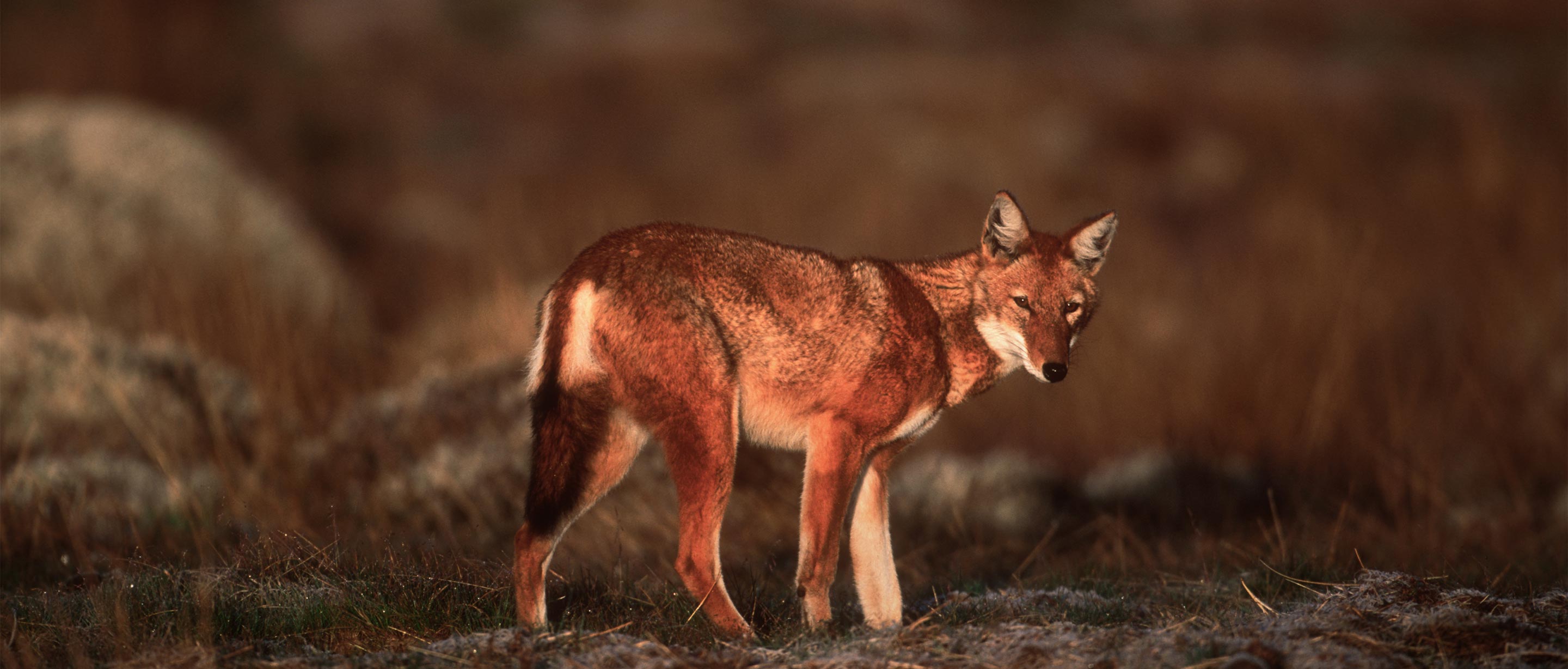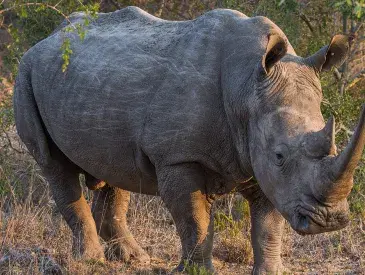What are Ethiopian wolves?
Native to Ethiopia, these long-limbed, slender canids are some of the most endangered animals in Africa. They have a black, bushy tail that can reach up to 40 centimeters in length, pointed ears, and a slender snout. They are tawny red with a white underbelly and blaze on their chests, and also have white fur on their throats, which sweeps up and covers the underside of their muzzle. The female wolves tend to be paler in color than males and are smaller overall.
Canis simensis
11 to 20 kilograms (24 to 42 pounds)
Up to one meter in length (about 3 feet)
Up to 10 years
Afro-alpine grasslands, rocky areas, and shrublands
60 to 62 days
Humans
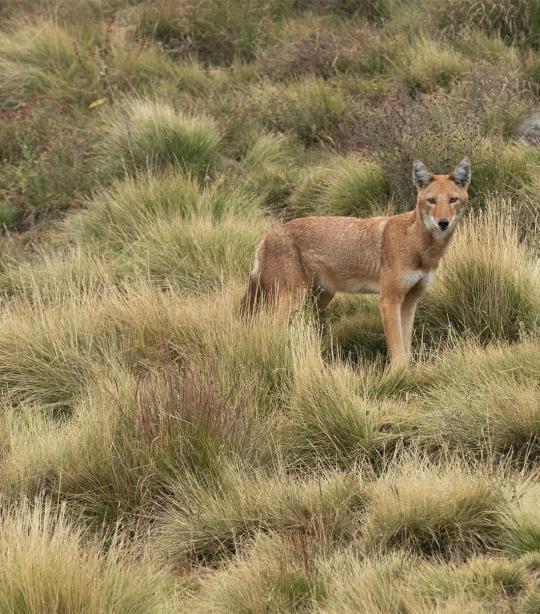
Challenges
Agriculture is swallowing up Ethiopian wolf habitat.
Humans currently pose the largest threat to this species. Subsistence farming in Ethiopia’s highlands is overtaking large swaths of their range, restricting them to higher and higher altitudes. The overgrazing of livestock is only exacerbating this habitat loss.
Diseases are taking a toll.
Population decline of the Ethiopian wolf is increasingly being tied to diseases, particularly in the Bale Mountains. Since 2008, this Ethiopian wolf population has declined by 30 percent due to consecutive epizootics of rabies and canine distemper. Rabies is a potential threat to all populations of the Ethiopian wolf, while canine distemper remains a serious concern in Bale.
Solutions
Our solutions to protecting and conserving the Ethiopian wolf:
African Wildlife Foundation is working to establish new mechanisms for ensuring local communities’ livelihoods. Our Simien Mountains Cultural Tourism project is improving infrastructure and accomodations in and around the national park. Increased revenue from community-owned and-operated tourism will reduce dependence on subsistence farming, ensuring Ethiopian wolf habitats stay protected.
In the Simien Mountains and three other locations in the Ethiopian highlands AWF engages local communities as “Wolf Ambassadors” to monitor wolves, introduce a report system to understand the causes of livestock predation by carnivores, and undertake rabies vaccinations for domesticated dogs to prevent disease outbreaks from spreading to Ethiopian wolf populations.
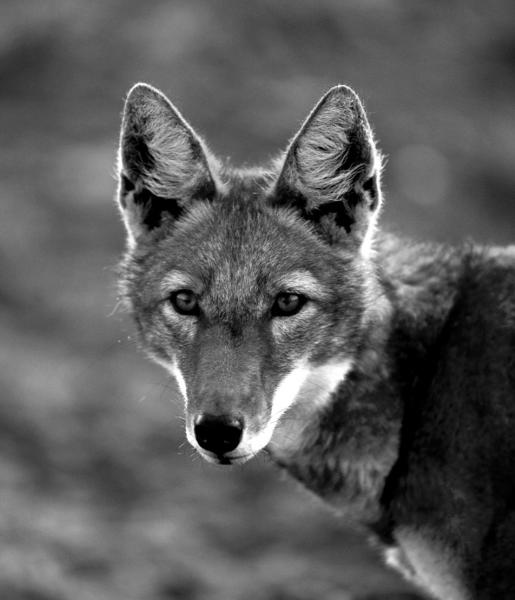
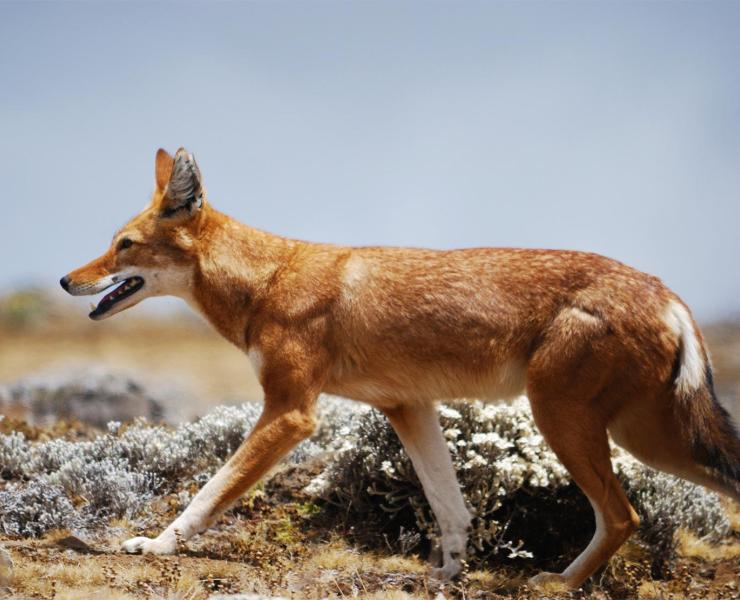
Behaviors
They are family-oriented.
Ethiopian wolf packs are groups of extended family members, made up of all the males born into the pack during the previous years and one or two females. During breeding season, commingling between different parks is more common due to habitat saturation and the high potential for inbreeding inside the closely related pack. These interactions are highly vocal, and end when the smaller pack flees from the larger one.
Raising Ethiopian wolf pups is a communal activity.
Adult Ethiopian wolves in a pack will help raise each other’s pups. Wolf mothers give birth in a den they dug themselves, under a boulder or inside a rocky crevice. These dens usually consist of a highly utilized network of burrows, which can have multiple entrances and be interconnected. Pups are regularly shifted from one den to another.
Diet
Ethiopian wolves live together, but hunt alone.
Unlike other wolf species, the Ethiopian wolf is a solitary hunter. Ethiopian wolf diet consists mainly of the giant mole rats and common grass rats that are abundant in their habitat. On the rare occasion, these canids will hunt cooperatively to bring down young antelopes, lambs, and hares. However, Ethiopian wolves are social animals and form packs of three to 13 individuals — this allows them to defend a territory with enough rodents to feed the entire group.
Habitats
Where do Ethiopian wolves live?
As its name suggests, the Ethiopian wolf is endemic to Ethiopia. Populations are restricted to just seven isolated enclaves in the Ethiopian highlands, with the largest Ethiopian wolf population (120 to 160 individuals) found in the Bale Mountains in southern Ethiopia.
